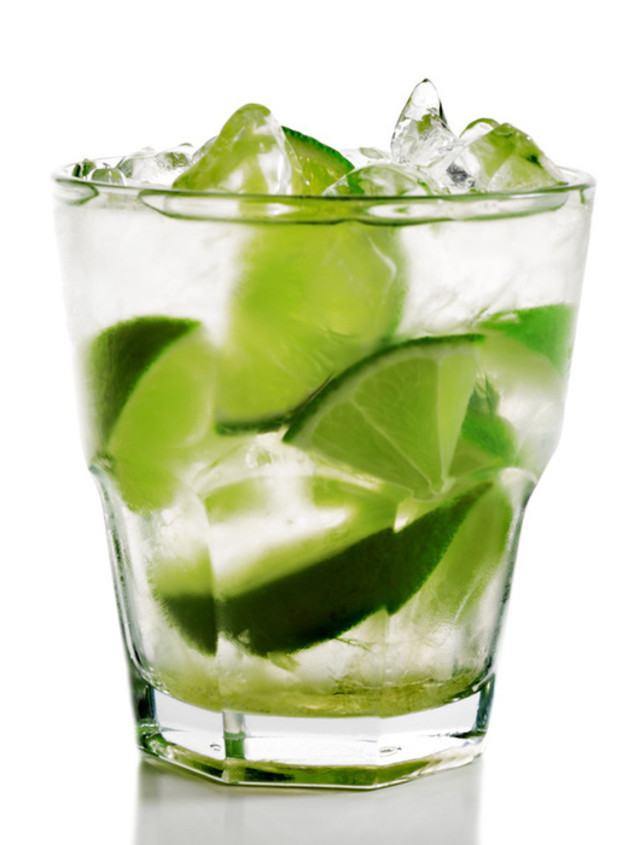Cachaça, Easy on the C

The caipirinha: easy to love, not super easy to perfect.
Recently Seattle Met editor Eric Scigliano told me a disturbing little anecdote.
Apparently, a Brazilian friend of his was at a Seattle bar and he heard the bartender refer to cachaça, the sugar cane–based distilled beverage from Brazil, as "cachaka." The bargoer corrected the bartender, explaining that the "c" at the end of the word is pronounced with as "s" sound. But the ‘tender insisted, going so far as to tell the guest, "You don’t know anything."
Oy, vey. Clearly, cachaça has a ways to go before it secures its place among well-known spirits in our city (also clear: that bartender has a ways to go before he understands how to bartend). But interestingly, here in Seattle we do have a cachaça company in our midst. Dragos Axinte and Emily LaCroix-Axinte are the owners of Novo Fogo, a distillery in the Atlantic Rainforest in Brazil, but they base the business here in Seattle. There are two cachaças under the Novo Fogo label—the Silver is aged in stainless steel; Gold soaks up color and flavor from small oak barrels.
Novo Fogo’s challenge is, of course, to make you want to buy cachaça. In the publicity materials the company plays up the environmental and "one-world" charms of the spirit. Images of emerald jungle and fruity cocktails garnished with plump tropical whatnot are meant to make you associate cachaça with a humid and verdant paradise in which there is nothing to do but sit back and enjoy a citric cocktail while exotic and endangered birds light gently upon your shoulders, offering up appreciative nuzzles now and again—avian thanks for supporting a product that, it is suggested, might somehow be involved in the survival of their species. "Celebrate the simpler life" reads the slogan.
In this way, Novo Fogo is recasting cachaça. Historically, it has been the Brazilian equivalent of moonshine, a coarse and cheap spirit drunk mostly by the poor. (Cocktail historian David Wondrich describes it as tasting "like it was aged in old truck tires.") But Novo Fogo would like to see cachaça become a supporting pillar of the affluent American home bar; where the buxom contours of its hand-blown glass bottle brush up against scarlet, slim Campari, stout Hendricks, and Angostura bitters, that lovingly rumpled-up little guy.
One sign that they are succeeding: last week I spied Novo Fogo front and center at French 75, the famed New Orleans cocktail lounge. I asked the bartender about it; he told me he was quite amped to start experimenting with the stuff. A random anecdote, but promising—good bartenders are so often the uncompensated salesmen for new boozes.
But if they are really going to make Americans buy cachaça for their home bars, the Axintes need a vehicle—something to do with it. And that vehicle, I should think, is the caipirinha cocktail.
A caipirinha is a simple drink in theory. Two ounces of cachaça, a lime, 1.5 tablespoons of sugar…or something like that. But sometimes with drinks, simple means trickier. If you’ve ever had a caipirinha with overmuddled limes or unincorporated sugar, you know how bad they can be. (A cachaça I unwisely ordered from a Capitol Hill bar is definitely on the list of the top 10 worst cocktails I’ve had in the last two years; it is only a few notches down from the batch of homemade Bellinis my friends and I came to refer to as the "barflinis.")
Still, when a caiprinha is right, it’s very right—refreshing, sweet in all the right ways, citrusy, uncomplicated. And warm summer days are the right time to start trying to perfect your own. Here’s David Wondrich’s recipe.
Just remember what we’ve learned about limes.
Novo Fogo Silver is currently on sale at the University Village liquor store for $27.50.




